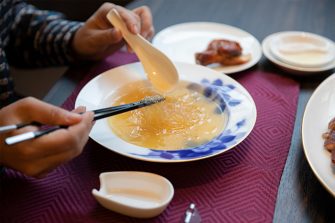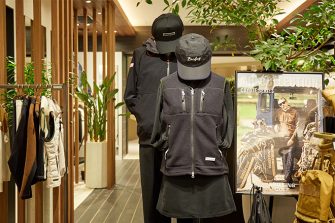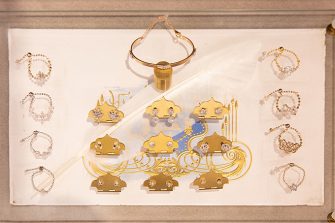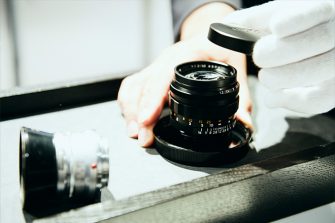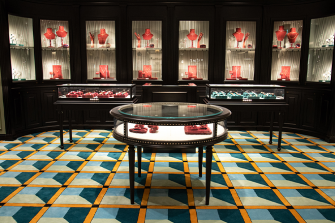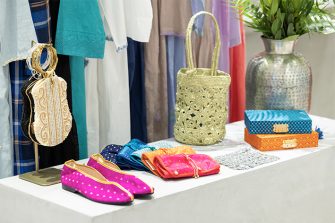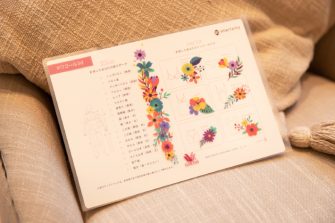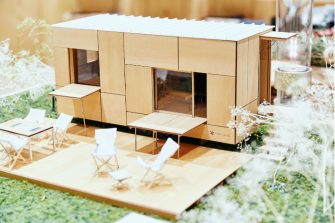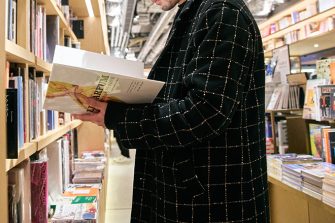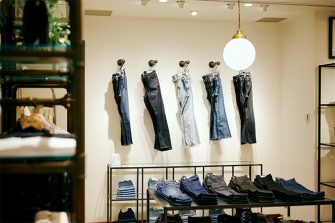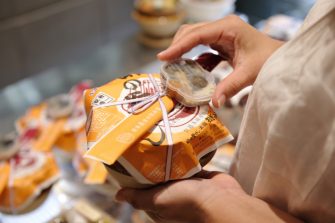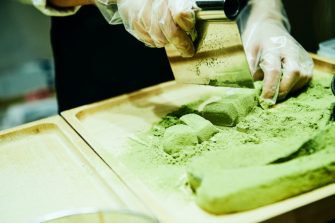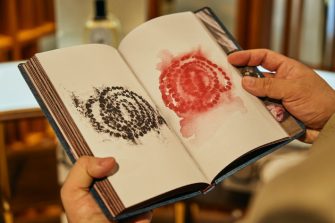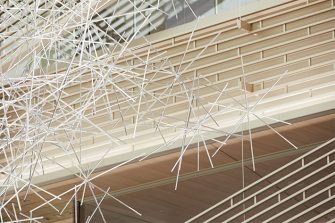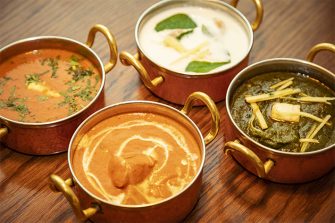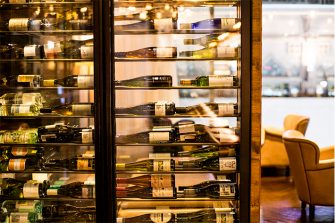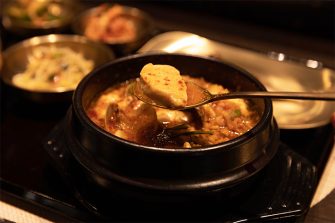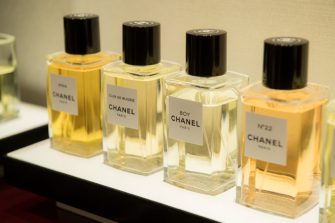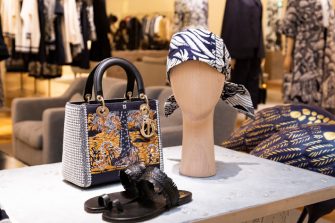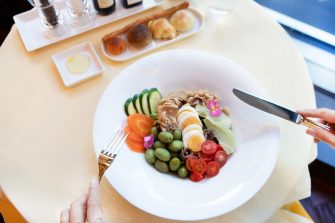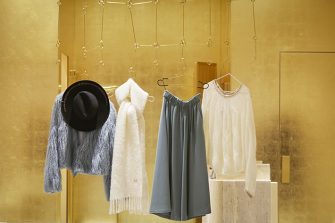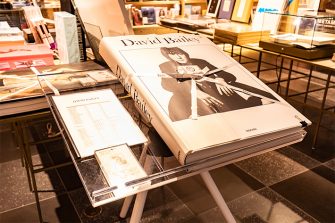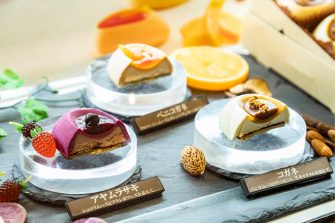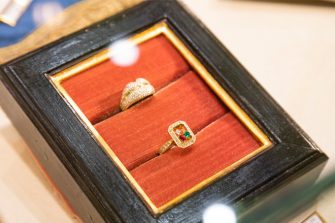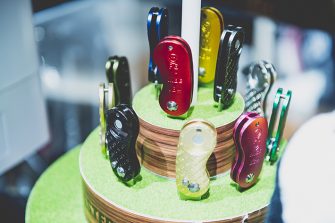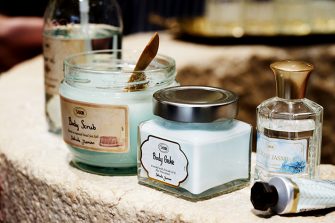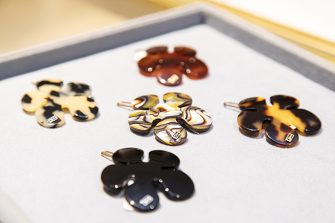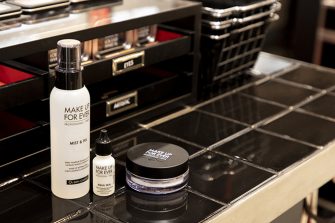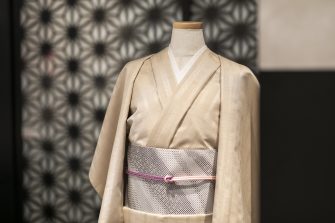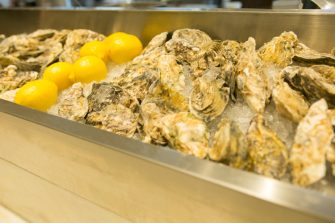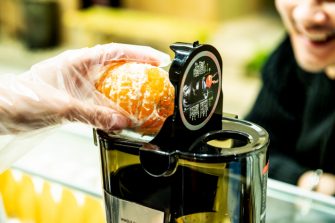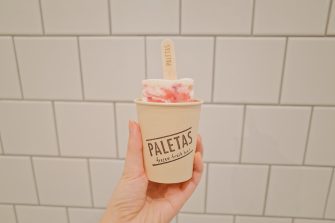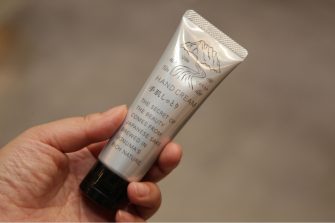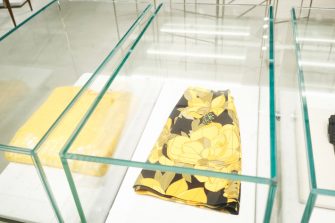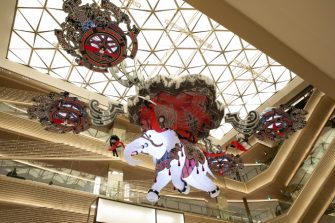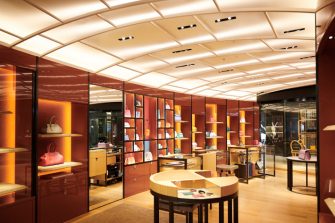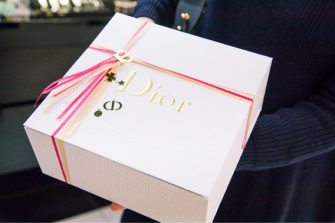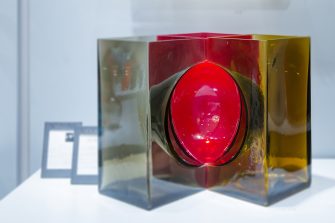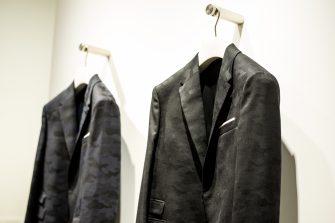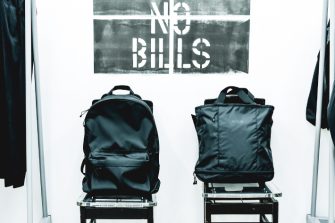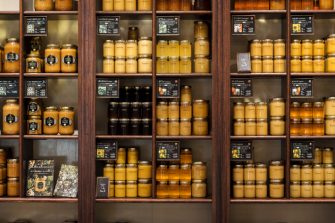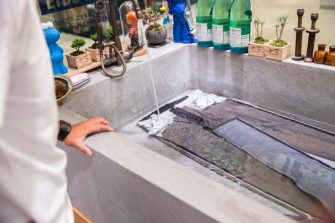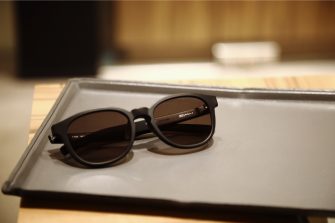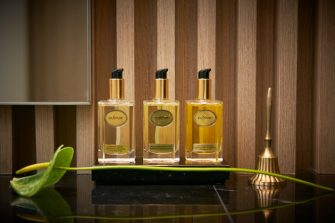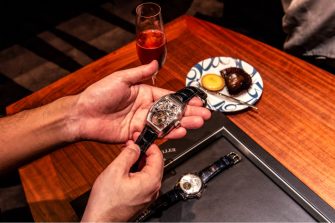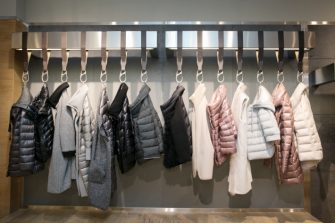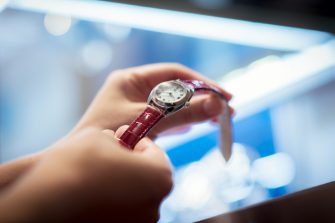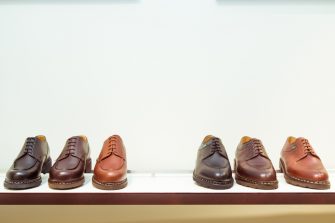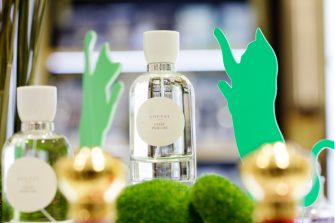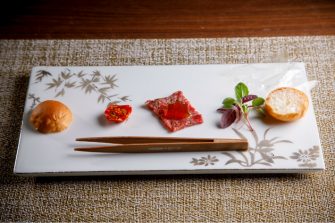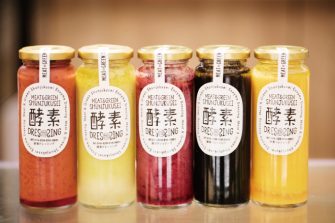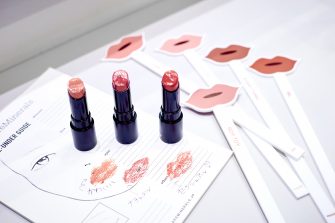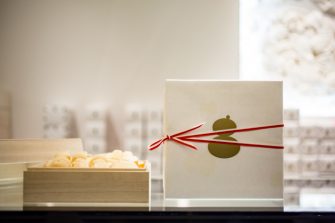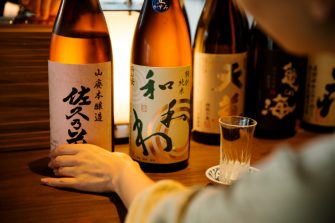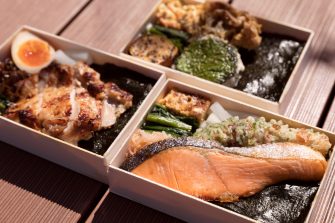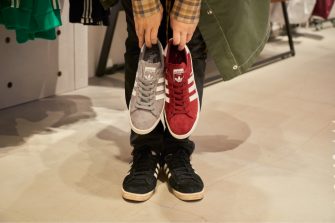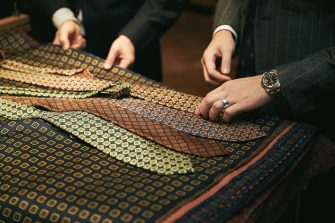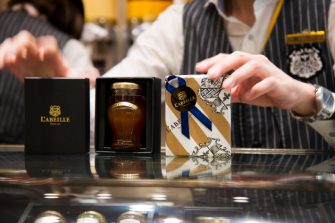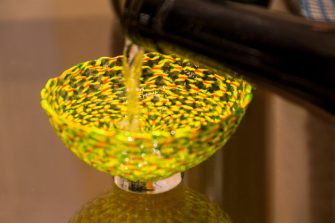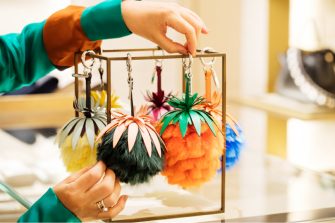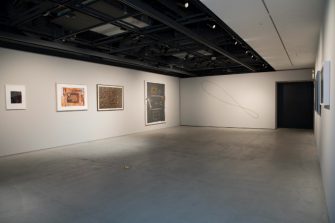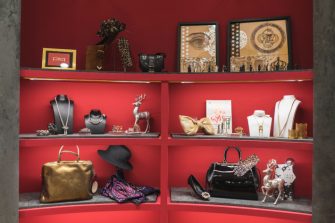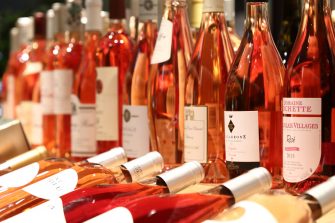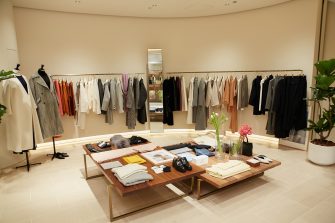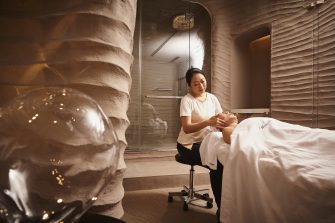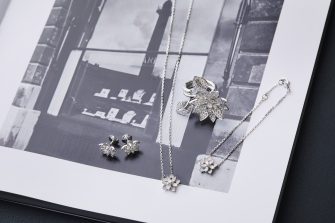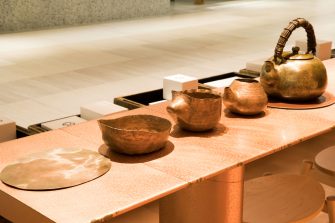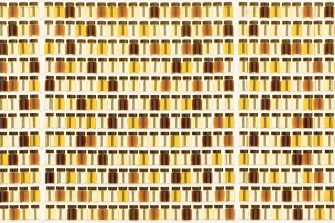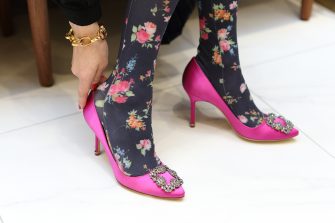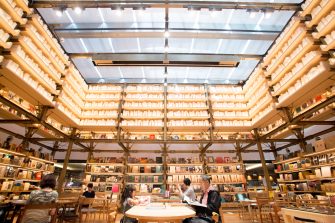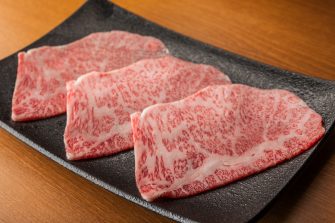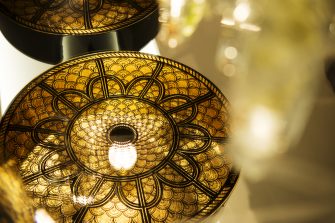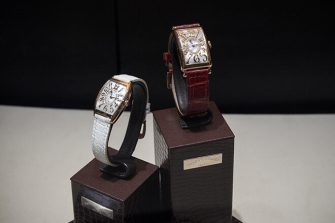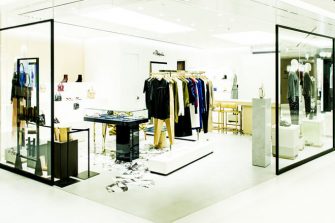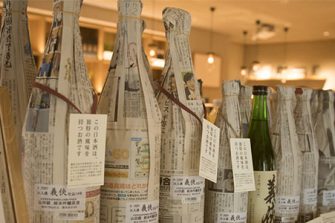

GINZA SIX EDITORS
时尚、珠宝&手表、生活方式、美容、食品…
精通各种类型的个性丰富的编辑们,在GINZA SIX上闲逛
记述走路发现的乐趣。
有时会像伦巴一样回到银座充满好奇心。 Like a Roomba, I Return to Ginza to Recharge My Curiosity
茜真美子
GINZA SIX EDITORS Vol.94
多亏了多次的地方和海外采访,家里兼办公室一度处于行李箱间的状态。虽然现在出差的次数减少了,但是由于工作的关系,市中心不在的期间反而增加了。……。到处忙碌地飞来飞去是符合性的,在悠闲的乡村和自然环境中的话心情会平静下来,但是去食物场景最前线的东京必须要好好追着(做不到工作)。好奇心和刺激快要断开的话,GINZA SIX。喂,去参拜。
首先前往的是6F“银座大食堂”。330坪的楼层里,寿司、鳗鱼、寿喜烧、牛肉火锅、烤鸡肉串、炸猪排等专卖店鳞次栉比。此外,还有1941年创业的果实店诞生的巴菲很受欢迎的“双叶水果帕拉银座本店”,还有西餐和甜品的咖啡店和餐厅“银座现代阳台”。从这个名字中可以看出,象征着昭和时代百货商店的大餐堂升级为现代化的风格。近年来,小吃店和大众酒馆掀起了热潮,但是恢复往年饮食业也是只有东京银座才有的。前台摆满一排的精致料理样品值得一看!
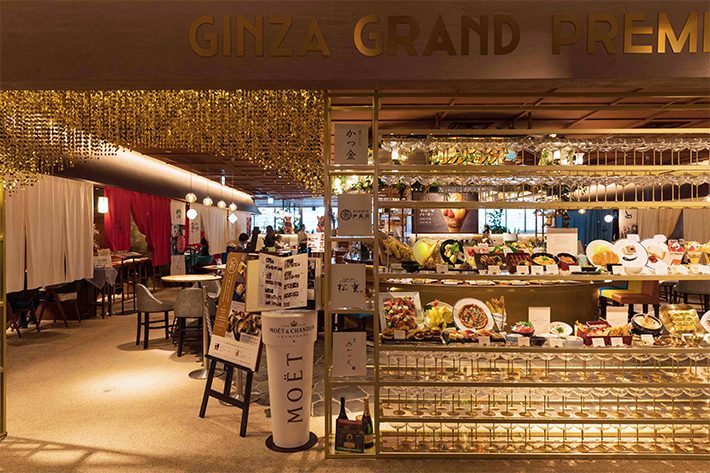
因为肚子饿了就不能沉默,所以立刻去商店的“韩国药膳料理尹美月”吃饱了。2019年9月26日开业,2014年开始在米其林指南东京版上获得二星级的“银座尹家”的姐妹店。这家店的老板主厨尹美月是韩国政府指定的韩国传统料理名人。可以摄取很多蔬菜,汤类也多的韩国料理不能从外面吃饭的首发。
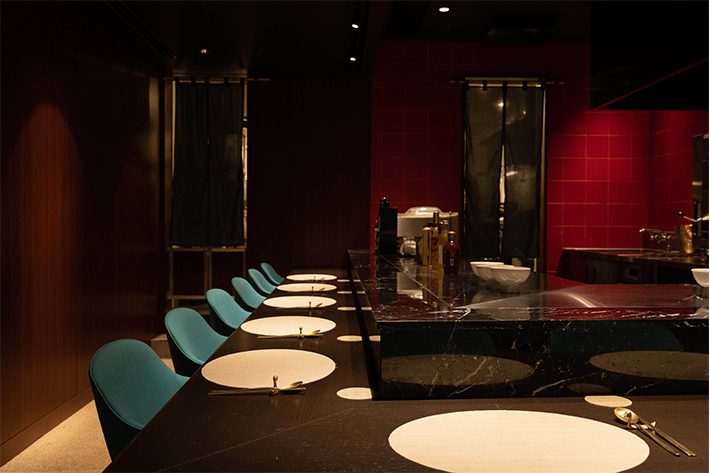
第一次来韩国的时候。想吃早饭就进了酒店附近的饭店,在没听点菜的时候就出来了黄豆套餐“库尔比贝克面包”,吓了我一跳。早上的菜单好像只有一种,附带裙带菜汤和面包张。怀念的心情,一边喊着“顺斗牛和黄花鱼很合得来”。
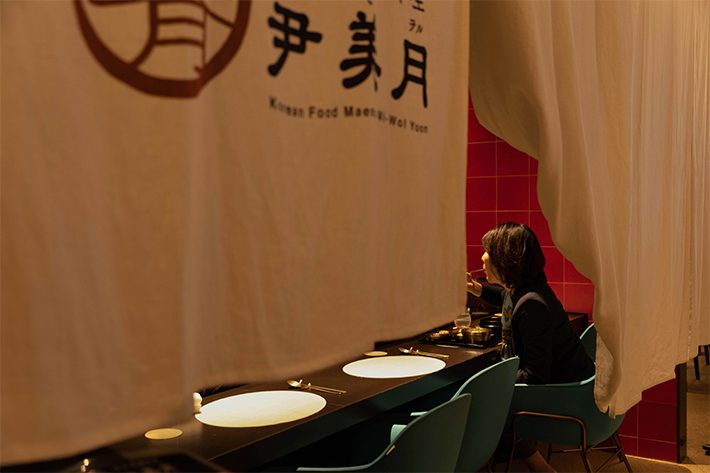
与以套餐为中心的总店“银座尹家”相比,这里是以阿拉斯加为主的大众料理。腌菜和泡菜自不必说,还可以加入南瓜切、药膳猪炖煮的“肉汤套餐”(2500日元※以下全部不含税价格)。自家制的豆腐、蛤蜊、金针菇、春菊、白葱和配料。调味料是用辣椒、牛脂、香味蔬菜做的韩国万能调味料“TATAGI”。烤好的干黄豆里要酸甜的佐料汁。尹某说,胜斗牛和黄花鱼很合得来。虽然只是品尝了一口,但是触发的感觉很厉害!
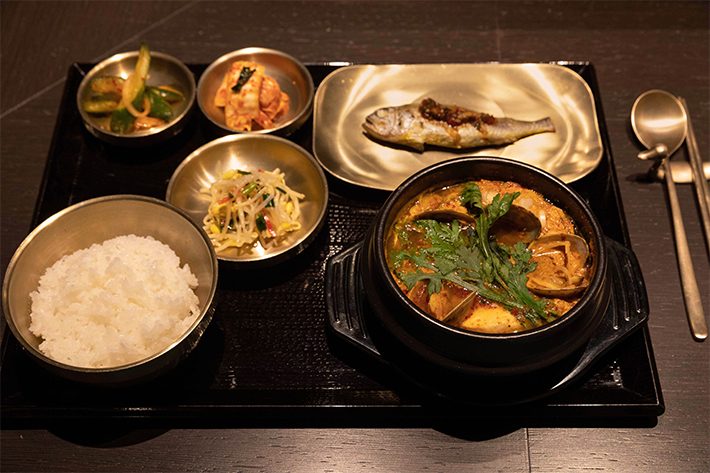
在日本,甜甜的味道比较多,而“尹美月”中的米肠汤面又有干劲。是理想的口味。小盘子里还有豆芽菜、白菜泡菜、黄瓜和洋葱泡菜。虽然只提供在店内,但是从3月开始,在楼层中央的桌子席上也能吃到的外卖“大妈”服务。这种玩心和脾气都很好。

接着去的是位于B2F食品楼层的“CAFÉEXPERTO”。以前就很在意,但是店里的情况有点变了吗? 在咖啡爆红的时候,顺便去看看。

“这是在蓝山朱尼帕峰农场,在沐浴着朝日的特级田地里生长的咖啡。咖啡是水果,慢慢成熟的话糖度会上升到成熟为止。充分沐浴阳光之后,由于涂上了蓝山喷雾,会被冷却。这个寒暖差慢慢成熟是不可缺少的”,咖啡师宫崎壮史先生说。“咖啡是水果”,具有冲击性的一句话。下次请让我在哪儿使用这个短语吧。
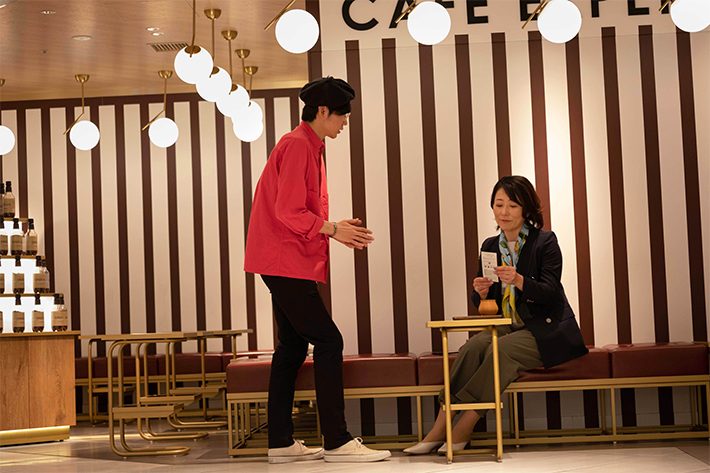
平日限定的2种酒比较套餐1000日元,虽然有点犹豫,但还是点了今天的咖啡(750日元~)。看,这个集中力! 一边让脸靠近滴水,一边以一定间隔滴水。仔细确认豆子的状态,同时检查香味。只是在侧看着面对咖啡的姿势,就会有什么样的感觉。
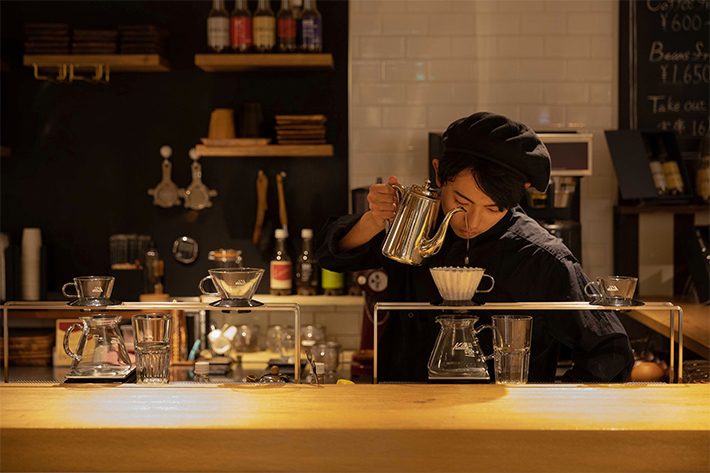
听说,酸味的概念也发生了变化。充分使用粗糙的豆子,不会产生多余的苦味和涩味,保持平衡,实现温和清爽美味的味道。为了提高提取的效率,首先在咖啡中加入热水烘焙后释放出二氧化碳。咖啡的精华是容易溶于热水的状态。掉下来的咖啡,芳香完全脱落了。只是注入了适宜温度的热水…阿美林!
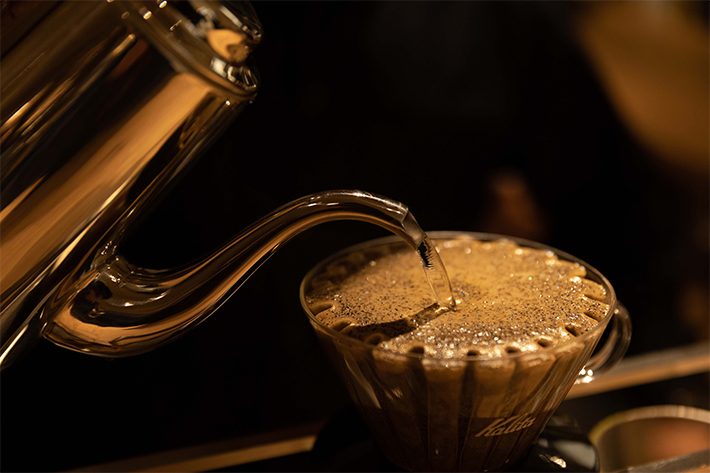
宫崎先生说:“在日本只关注焙煎,但是本店主要着眼于产地、农场、栽培、品种。”。倾听的话,好像自己也变成了咖啡通。不仅仅是舌头,用耳朵来品尝也很重要。明明是大型设施,却能以像在商店街或个人店一样的距离感来接触,真是不可思议。无论多么好的店,最终还是人啊(一贯主张)。
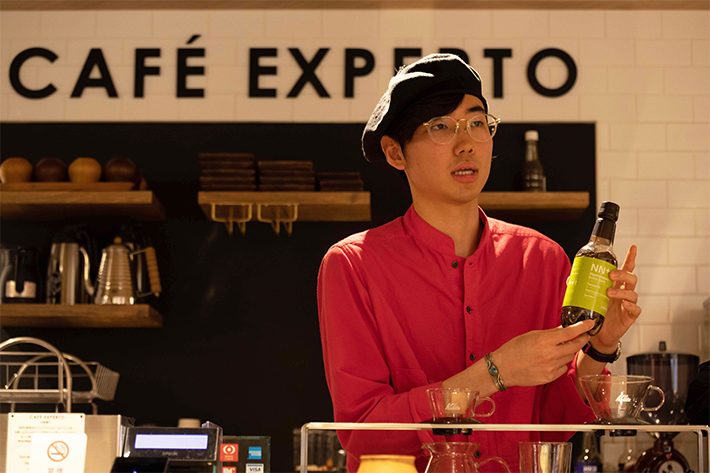
最近,送礼物的机会急剧增加。从轻松愉快的东西到特别的绝品,信息=素材的更新跟不上。来到这样的地方,发现了可靠的存在。在一级田地里收获的最高级别的“普鲁米埃克利咖啡馆”(3000日元~)。田地的筛选、栽培、收获、精选、运输、保存等全程都有严格的品质基准,是只有清除的豆子才能冠上的品牌线。据说为了能承受二氧化碳的内部压力,将其放入香槟瓶中,也有将芳香好好地封闭起来的优点。不放入冰箱,常温保存即可,这也是其魅力之一。包装设计也像画一样漂亮,外观的包装也很漂亮。

最后是平时不怎么有机会踏入的13F的「THE GRAND GINZA」。在约500坪的楼层里,有休息室、餐厅、VIP房间、班克、教堂和茶室等复合空间里,目标是豪华的主厨柜台“银座极-KIWAMI-”。听说,京都东山有“高台寺极-KIWAMI-”的东京店之类的。酒店里的某个地方悄悄营业的面条,或者像百货商店里潜藏的酒吧一样,隐藏起来的店被拒绝了。

“一边处理全国各地的食材,一边增加世界各国的食材。每次都会以最好的烹饪方法来做。因为是柜台风格,所以和客人一边交换对话的投接球,一边考虑喜好和场景。基本上是法式的,但是配合食材加入和风的风味,也能灵活地回应法国风味”。随机应变的应对、抽屉之多是实力的证明!
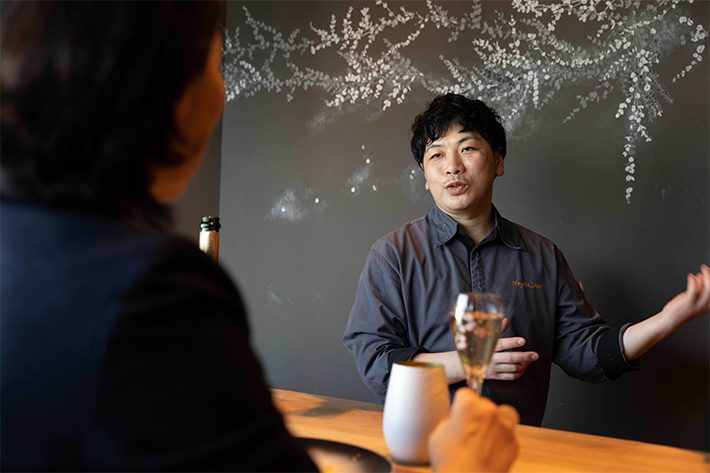
有一天的冷前菜是用海带系的斑鱼、北海道产的海胆、鱼子酱。下面是留有红芯萝卜、绿芯萝卜、黑萝卜的座席。大叶酱汁、葡萄酒醋、最后浇上柑橘调味汁,撒上柚子馅的一盘。推荐的极品套餐有10种(20000日元)。从干杯酒香槟的矿物质感和搭配的贝壳和鱼贝类的娱乐活动开始,温冷前菜、汤、鹅肝料理、鱼料理、奥马尔虾和蟹等甲壳类料理、主菜、甜点等流程。对于没有时间的嘉宾来说,短路线等随机应变。
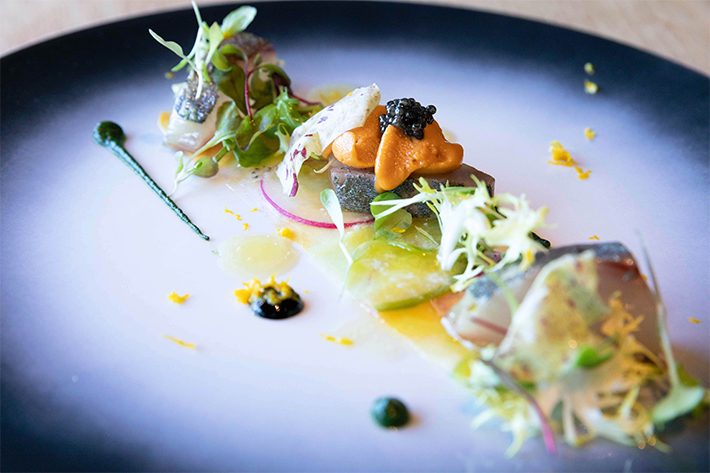
主菜牛肉在低温下慢慢加热,使其变软。最后在客人面前烘焙,只有表面很香。即使肉汁流出来,肉也很热,对于想吃的我来说是无法忍受的绝品。

“kawa和牛里脊肉、时令蔬菜和松露香”。据说千叶县佐原市有系列旅馆,这次烤当地的kawa和牛。弗朗贝,最后用意大利产的松露切片。除此之外,天然纪念物见岛牛和1年内只出货50头的北海道产的凤尾鱼也登场了。

服务经理兼侍酒师高桥正英选择的葡萄酒是“Y by Ageki”。艺术家YOSHIKI和那帕瓦雷的酿造家罗布·蒙达维Jr合作而诞生的全体红葡萄酒。能遇到平时难得一见的品牌,也正是因为有了名侍酒师。

最后在休息室提供的名产甜品“银座马克西姆”的草莓千层派,4个小时左右的GINZA SIX巡游也结束了。好吃的发现自不必说,能遇到各种各样的专业人士也是很大的收获。打算充分充值,但是那个和这个都是贪婪的毅力。快乐留在后面就好了。改日重新开始。
Text: Mamiko Kume Photos: Kayoko Ueda Edit: Yuka Okada
I spend so much time on assignment abroad or outside major metro areas, my home/office has been transformed into a temporary storage space. Despite the fewer actual number of trips these days, my job seems to take me out of the city for longer periods. Busily buzzing from here to there suits me, but while being in tranquil villages or in the midst of nature calms the spirit, I have to stay on top of things in Tokyo, the frontlines of the food scene—or else I’ll be out of a job! But when curiosity or stimulation runs low, I can count on GINZA SIX for a recharge. It’s where my pilgrimage begins.
I head first to the Ginza Grand Premium Food Hall on the sixth floor, with its over 1,090 square meters of floor space and specialty eateries for sushi, eel, sukiyaki, beef shabu-shabu, chicken skewers, and deep-fried pork cutlets. Also there are the popular parfaits of Futaba Fruits Parlor, born of a produce store founded in 1941, and Ginza Modern Terrace, a café and restaurant offering Western-style food and sweets. As the name suggests, it’s like a food hall from a Showa-era department store sporting a contemporary upgrade. Yesteryear style pubs and taverns have been booming in recent years, and this successful revival of an erstwhile food format is quintessentially Tokyo’s Ginza. The elaborate plastic food samples on display in front are quite a sight!

When my stomach is empty, it won’t keep quiet. I immediately head out for a meal at the hall’s Korean Food Maestro Mi-Wol Yoon. Opening September 26, 2019, it’s the sister restaurant to Ginza Yunke, awarded two stars in the Michelin Guide’s Tokyo edition since 2014. It’s produced by owner-chef Mi-Wol Yoon, a traditional Korean food maestro, as designated by the Korean government. Korean food provides ample helpings of vegetables, plus plenty of soups and broth. It’s something you want to keep in your starting lineup when eating out.

On my first trip to Korea, seeking breakfast, I went to a place near my hotel. To my surprise, I was served the ishimochi (white croaker) combo meal –even before I gave my order! The breakfast menu had just the one option, it turned out, and it came with wakame seaweed soup and banchan (small side dishes). Feeling nostalgic, I found myself thinking, “Wow, sundubu must go awfully well with ishimochi…”

The flagship Ginza Yunke primarily serves full course meals. But here, Mi-Wol Yoon serves up popular fare mainly á la carte—namul and kimchi, of course, but also japchae and bossam, which is pork broiled in medicinal herbs. This time, I opted for the sundubu (soft tofu stew) combo (2,500 yen; all prices listed before tax). It’s packed with homemade tofu, clams, enoki mushrooms, shungiku (edible chrysanthemum leaves), and white scallions and flavored with Korean all-purpose seasoning dadaegi made from red chili peppers, beef tallow, and potherbs. The dried ishimochi is broiled and served with a sweet-and-sour condiment sauce. According to Chef Yoon, sundubu and ichimochi go very well together. I’ve just had one bite, and it’s a total trip!

The sundubu you find in Japan tends to be sweet. At Mi-Wol Yoon, it has sharpness and depth, my ideal taste sensations. Side dishes include bean sprout namul, Chinese cabbage kimchi, and cucumber and onion kimchi. This was dine-in only, but the restaurant in March will introduce an okamochi (take-out in carrying box) service that lets you eat at the tables in the middle of the floor as well. Such combination of whimsy and chic is always more than welcome.

My next stop is Café Experto on the Food Floor, the second belowground floor. It had caught my eye, and—wait, I think it looks a little different! I headed in for a coffee break.

“The coffee is from a special grove at the Blue Mountain Juniper Peak coffee farm, the first to receive the morning sunlight. Coffee is a fruit, so it’s gradually ripened until fully ripe to increase the sugar content. After receiving ample sun, the Blue Mountain mist sets in and cools the grove. In a word, this temperature difference makes a major difference,” explains the café barista, Miyazaki-san. I’ll have to use his impressive phrase, “Coffee is a fruit,” sometime somewhere.

On weekdays, there’s a special deal that lets you compare two different blends for 1,000 yen. I’m tempted, but I order the coffee of the day (starting at 750 yen). Wow—look at that focus of his! The barista holds his face right next to the dripper while allowing the hot water to drip at a precise rate. He carefully checks the ground beans and the aroma at the same time. Just studying this display of attention and respect for the coffee—there’s a lesson here, I think.

When I ask, it’s something about a change in the concept of acidity. Using a lot of coarsely ground beans makes it possible, I’m told, to create well-balanced, mild, and refreshingly delicious flavors free of excessive bitterness. To increase extraction efficiency, the coffee beans are first soaked in hot water. This process eliminates from the beans carbon dioxide gas produced by roasting, making it easier for the coffee extract to dissolve in hot water. When dripped completely through, the aroma from the beans is completely transferred to the liquid. And all this simply by dripping hot water at the right temperature…amazing!

“In Japan, people tend to focus almost entirely on roasting. Here, we also look at the production region, coffee farm, cultivation methods, and bean variety, among other things,” says Miyazaki-san. As I listen, I feel myself becoming more of a coffee aficionado. It’s not just important to taste, but to listen, too, it seems. GINZA SIX is a big place, but it’s amazing how you can interact with people at close distances, as you would on a shopping street or in an owner-operated shop. No matter how good the store, in my view, it’s the people that matter.

I’ve experienced a sharp increase recently in gift-sending opportunities. From casual, affordable gifts to the truly special, my information, and therefore story ideas, can’t keep up. But I’ve now found a most reliable option: Premier Cru Café (from 3,000 yen), the highest grade of coffee from the best groves. This flagship line offers only coffee meeting the most rigorous standards in all processes—grove selection, cultivation, harvest, sorting, transportation, and preservation. It comes in champagne bottles to withstand the internal pressure of the carbon dioxide, which has the added benefit of bottling up all of the aroma. Store this at room temperature. It doesn’t need to be refrigerated, another draw. The package design is great, too; it’s like a painting. The charming wrapping is wonderful, too.

Lastly, I go to The Grand Ginza on the 13th floor, a restaurant floor where I normally don’t have the opportunity to dine. Measuring more than 1,650 square meters, the multiple-purpose space features a lounge, restaurant, VIP room, banquette room, chapel, and tea room. I’m headed to Ginza Kiwami, a luxurious chef’s counter, the Tokyo version of Kodaiji Kiwami in Higashiyama, Kyoto. It strikes me as a tantalizing hideaway, like a noodle shop secretly located in the corner of a hotel, or a bar hidden away in a department store.

“We use ingredients from around Japan, plus food from around the world. They’re prepared in the way we think ideal at that particular time. We stand here behind the counter—so, as we talk with customers, we also consider what they like and the circumstances. It’s basically French, but we add Japanese touches, depending on the ingredients, for a type of French fusion. We’re pretty flexible in this regard.” So says Chef Hayato Saito. The ability to play things by ear and draw on ample resources in doing so is the sign of a true professional!

The cold appetizer on one day is white trevally lightly salted with kombu, Hokkaido sea urchin, and caviar. Underneath are concealed sheets of red, green, and black daikon. A Shiso sauce, balsamic vinegar, and finally a citrus dressing are dribbled over this dish sprinkled with yuzu zest. The ultimate chef’s course consists of 10 dishes (20,000 yen). It starts with a shellfish or seafood amuse-bouche, which goes splendidly with the minerality of the champagne served for the toast, then proceeds to hot and cold appetizers, soup, a foie gras dish, seafood dish, a crab or lobster crustacean dish, the main dish, and dessert. The course can be truncated for customers without much time—they’re quite flexible.

The beef served as the main dish is cooked slowly at a low temperature until tender. It’s flambéed right in front of the customer to finish. The roasted surface is aromatic. Even with the juices seeping out, I want to eat it hot, a masterpiece I simply can’t resist.

“Kazusa wagyu beef, seasonal vegetables, and aroma of truffles.” There’s an inn in the same corporate group in Sawara, Chiba Prefecture. Today, local Kazusa beef is roasted, then flambéed to finish and spiced with Italian truffles. Sometimes you’ll be served beef from Mishima cattle, an official Natural Treasure, or l’agneau de lait, of which only 50 are shipped annually.

Selected by service manager and sommelier Masahide Takahashi, the wine is Y by Yoshiki, a full-bodied red created through a collaboration between a music artist Yoshiki and Napa Valley winemaker Rob Mondavi Jr. Having a sommelier means getting to learn about an otherwise hard-to-find label.

Lastly, I try the famous Ginza Maxim strawberry mille-feuille currently being served in the lounge, thereby completing my four-hour tour of GINZA SIX. I’ve made some delicious discoveries, but the major takeaway was meeting a number of true professionals. I feel like I’ve gotten a pretty good charge, but nearly everywhere I look, my appetite for more threatens to rear its head. I’ll leave the fun for next time and make a fresh start another day.
Text: Mamiko Kume Photos: Kayoko Ueda Edit: Yuka Okada
茜真美子
作者编辑。曾任《东京日历》、《料理王国》的副主编,成为自由职业者。以餐厅为首,以食品文化、日本各地的饮食现场和国内外的旅行为主进行取材和执笔。负责《BRUTUS》的格鲁曼温故知新、《周刊新潮》纪念日的晚餐等连载工作。


